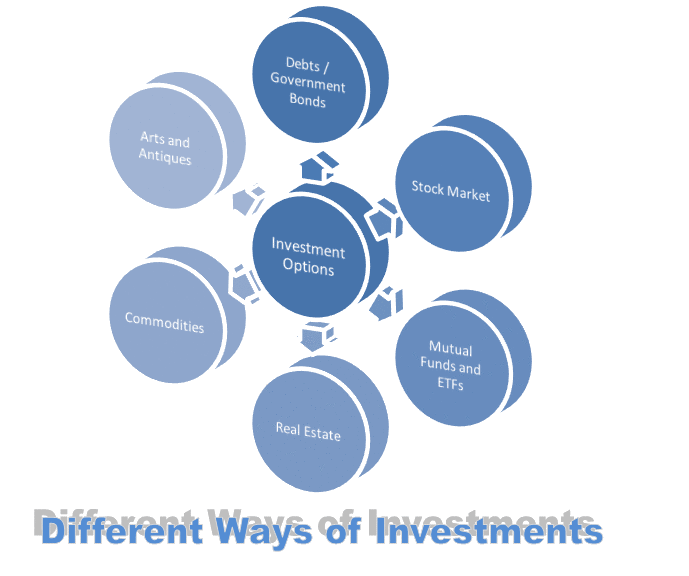A key concept in finance and investing is “stock market return,” which describes the profits or losses that investors experience from their participation in the stock market. It is essential for analysts, policymakers, and investors to comprehend stock market returns. Let us understand how to calculate stock market returns, break even point and basis point in this topic
The goal of stock trading for investors is to gain capital over time. The stock market’s intrinsic volatility and unpredictability cause fluctuations and uncertainties in returns. This necessitates the application of risk-management strategies to maximize potential gains.
Stock Market Returns Definition
Investors measure the profit or loss from investing in stocks over a specific time period as the stock market return. This metric crucially gauges the performance of individual equities, investment portfolios, and financial markets overall. Analyzing and interpreting stock market returns provides insights into the economy’s state and trends. It also helps investors assess the profitability of their holdings.
Stocks yield two types of returns: stock appreciation return and dividend returns. Stock appreciation return denotes the variance between the buying and selling prices in the stock market. Conversely, dividend returns signify the distribution of profits to shareholders by companies when their stocks perform well, typically in the form of dividends or bonuses. Let us take an example to understand how to calculate stock market returns:
Example of Stock Market Returns
You buy 50 stocks of Infosys shares for Rs.2000/- (Around $30). In second quarter of the year, Infosys has paid dividend of Rs.50 per share and year later you sell Infosys stocks at Rs.2500/- (Around $38). How much return do the stocks actually earn?
Let us evaluate:
Investment Amount = Rs.1,00,000/- (Rs.2000 * 50 shares)
Stock appreciation = Rs.500 per share (Selling price – Buying price)
Dividend Income = Rs.50 per share (Paid by the company to shareholders)
Total gain = Rs.550 per shares
Total gain percentage = 27.5%
Result: So overall you have gained Rs.27,500/- (27.5% return on investment) which includes 25000/- (Rs.500 * 50 Shares) as a stock appreciation returns and Rs.2500/- as a dividend income.
Break Even Point Definition
In financial terms, “Break Even Point is that line of no profit no loss returns”. If you are investing in any assets there are various taxes and duties which increases your capital investments. The Break-even point is the minimum return required on your investment to maintain a no-loss, no-profit condition.
There are mainly two factors which raise your break-even point of your returns:
- Inflation Rate
- Duties and Taxes
First and foremost thing which you need to do is find out the inflation rate and the income tax slabs of your country. Both this factors are necessary to calculate the break-even point of you investment returns.
Example of Break Even Point
Let consider India’s inflation rate at 7% and effective tax rate at 30%. Formula for break-even point (In percentage) is: [(Inflation Rate / (100 – Income Tax Rate)) * 100]
Let us evaluate:
Considered, Inflation Rate = 7% and Income Tax Rate = 30%
When calculated:
= [(7 / (100-30)) * 100]
= 10%
Result: This means to maintain the purchasing power of the money with growing valuation, minimum returns of 10% need to be earned on investment to maintain your break-even point. Anything less than that would be considered as loss of money.
What is a Basis Point
The basis point, also referred to as a percentage point, represents a fundamental unit in financial calculations. Most financial calculations express values either as percentages (such as profit or loss) or as percentage points (including interest rates and repo rates). In financial terms 1 basis point is equal to 1/100 of percentage point or you can also say that 100 basis points are equal to 1 percentage point. Let us take an example to understand clearly:
Example of Basic Point
One fine day, Reserve Bank of India declared hike in repo rate. Repo rate is increased from 6% to 9%. How many basis point repo rates are increased?
Let us evaluate:
Percentage Increase = 50 percentage [calculated as ((9-6) * 100 / 6)]
Percentage Point = 3 percentage points (which is 9% – 6%)
Basis point = 300 basis points (1 percentage point = 100 Basis points)
Result: When the Reserve Bank of India increases the repo rate by 300 basis points from the current rate of 6%, it means that the new repo rate will be 9%, or it can also be stated as a 3 percentage point increase.
Conclusion
Furthermore, stock market gains have a significant impact on economic dynamics by affecting consumer confidence, business investment decisions, and overall economic growth. Policymakers and central banks typically monitor stock market performance as a gauge of financial stability and overall economic well-being. They often take action to curb excessive volatility or address systemic problems accordingly.
Understanding the causes, patterns, and effects of stock market returns is crucial for grasping financial market dynamics and making informed investment choices. This topic highlights the importance and impact of stock market returns in finance, setting the stage for a detailed examination of their complexities and subtleties.
Read E-Learning Tutorial Courses - 100% Free for All
Basics of Investing for Beginners
- Chapter 1: What is Investment and its objectives?
- Chapter 2: Why is Investment important for Economic growth?
- Chapter 3: Ways to Invest your Money and Make Profit
- Chapter 4: Best Investment Opportunities for your Retirement Income
- Chapter 5: What are the Legal Matters you should know before Investing?
- Chapter 6: Different Types of Investment Risks Involved in Investing
- Chapter 7: When and How to Invest in Stocks?
- Chapter 8: How Positive Attitude can improve your Investing mindset?
- Chapter 9: Should you Borrow Money to Invest in Stock Markets or Funds
- Chapter 10: 5 Rules of Thumb - To be consider before making Investments
- Currently Reading: How to Calculate Stock Market Returns and Break Even Point?
- Chapter 12: How to Calculate Compound Interest and Simple Interest?
- Chapter 13: Rule of 72, 114 and 144 of Compounding Interest formula
- Chapter 14: What is the Difference between Trading, Investment and Speculation?
- Chapter 15: How to become a Smart Investor or a Successful Investor
- Chapter 16: Tutorial Quiz – Basics of Investing for Beginners Module







